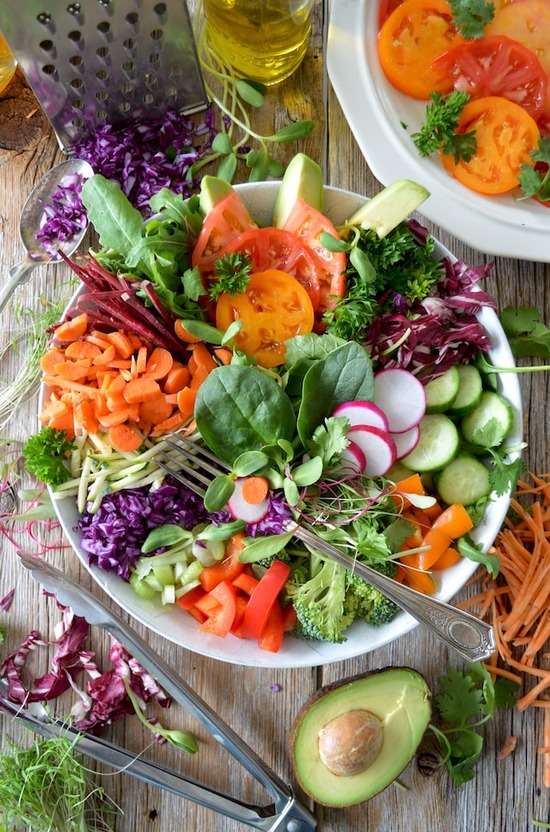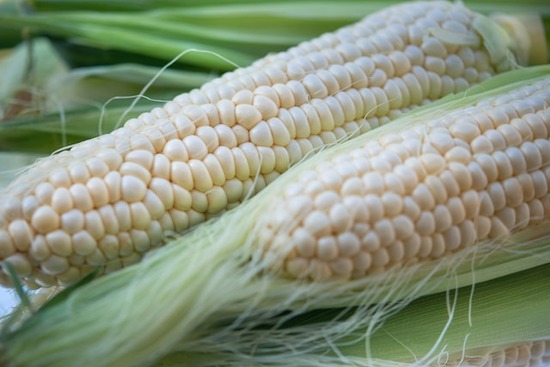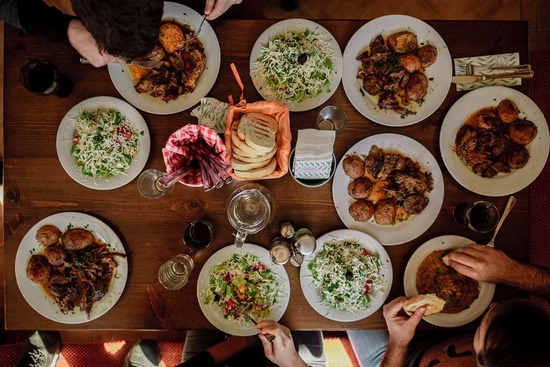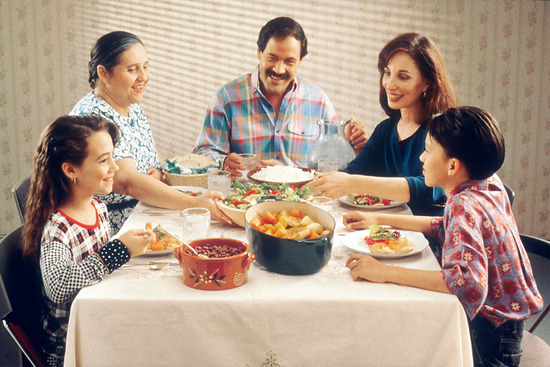The Adventist Haystack (It’s Not What You Think) + 4 Recipes
If you’ve ever heard Seventh-day Adventists mention “haystacks,” they’re probably not talking about literal stacks of hay.
Haystacks are basically a taco salad—with an Adventist spin on it! Most versions are vegetarian and offer an endless combination of tasty toppings. We eat them often because they’re healthy, scrumptious, and easy to make.
But where exactly did haystacks come from? And who came up with such an unusual name?
Get to know more about this interesting part of Adventist culture in the following sections:
Let’s dig in!
What are haystacks?
Haystacks are a customizable, healthy, and delicious meal often served at Adventist gatherings. They have all the major components of a taco salad for people to assemble themselves. We typically start our haystacks with a bed of corn or tortilla chips, followed by lettuce, beans, cheese, salsa, and sour cream.
Most Adventists make their haystacks vegetarian.
But the great thing about this meal is that it’s customizable. You can make it light or hearty and use any toppings you want for a variety of flavors and textures.
Some might opt for fresh ingredients from the grocery store, but for those on a budget, canned goods work just as well. They don’t require much prep work—you only have to heat up a couple of ingredients. From there, it’s just a matter of placing the toppings in different bowls and letting your guests put it together.
The history of haystacks
The idea for haystacks all began with an Adventist woman named Ella May Hartlein who loved Mexican-inspired food.1
In the 1950s Mrs. Hartlein lived in Arizona, where she and her family enjoyed a variety of Mexican cuisine. But they eventually moved to the northeast, where she couldn’t find many Mexican restaurants.2
That’s when she decided to cook up a little something herself.
She first showcased her dish at a local picnic, and it was an instant hit! After that, it was called “the Hartlein special” until it was given the name “haystacks.”3
How this name came about is still a mystery.
But it’s not hard to guess that haystacks got their name from the way they’re shaped. A big mound of lettuce and crispy corn chips—plus all the toppings—might remind you of a stack of hay.
Turns out, all those toppings do more than add taste. Adventists have some other good reasons for eating them.
Why Adventists eat haystacks
Haystacks are a great meal to have if you’re looking for something quick, easy, and inexpensive. And Adventists especially enjoy them because they offer a healthy meal that coincides with our desire to care for our bodies.
One principle we hold dear is the principle of healthy living. That’s why many of our dishes are plant-based or vegetarian—haystacks included. Plant foods are full of nutrients to effectively fuel our bodies.
Here are just a couple of examples of what you’ll find in haystacks:
- Tomatoes, avocados, and certain beans are high in potassium.4
- Bell peppers are high in vitamin A.5
- Beans and leafy greens are high in6 calcium.
Not to mention that the whole dish is high in fiber and low in cholesterol (or even cholesterol-free if you’re making a vegan version). Beans make it a great protein option, too (especially for vegetarians).
Although not all Adventists are vegetarian, many have benefited from these plant-based benefits. In fact, Adventists are some of the longest living people in the world, mainly because of what we eat.7
Healthy eating matters to us because we want to care for our bodies, which the Bible says are temples of the Holy Spirit:
“Or do you not know that your body is the temple of the Holy Spirit who is in you, whom you have from God, and you are not your own? For you were bought at a price; therefore glorify God in your body and in your spirit which are God’s” (1 Corinthians 6:19–20, NKJV).
Taking care of our bodies is a way to thank God for all He’s done for us. Through healthy habits, we glorify Him, serve Him better, and experience a higher quality of life.
Try haystacks for a simple and healthy meal
Haystacks demonstrate that eating healthy doesn’t have to be difficult or expensive. Something as simple and cheap as this Adventist classic can turn canned vegetables into a satisfying meal you’ll look forward to having again and again.
And it’ll put you on the path to trying some other healthy and delicious meals!
Want the ultimate guide to practical Adventist eating? Look no further than our Adventist nutrition article for practical tips on staying healthy and living longer.
4 Mouthwatering Haystack Recipes
 Interested in making haystacks at home? We’ve got four tasty recipes just for you!
Interested in making haystacks at home? We’ve got four tasty recipes just for you!
Each of these recipes serves about six people. Because they are so simple, they require little to no prep time. Put all of the ingredients in separate bowls so each person can add whichever toppings they want.
Place any perishable leftovers in airtight containers in the fridge. Most of your toppings should last about a week.
The Original
- 4 bags (262 g) of Fritos corn chips
- 1 large can (40.5 oz) of cooked kidney beans
- 1 package (340 g) of veggie taco meat
- 2 bags (227 g) of shredded iceberg lettuce
- 1 small can (6 oz) of sliced black olives
- 1 diced tomato
- 1 diced onion
- 1 bag (226 g) of shredded cheese (dairy or plant-based)
- 1 container (16 oz) of sour cream (dairy or plant-based)
- 1 jar (16 oz) salsa
- 1 container (16 oz) of guacamole
Instructions: Heat up the kidney beans and veggie taco meat. Get a large dinner plate and layer on the ingredients—corn chips first, then the beans, taco meat, lettuce, shredded cheese, vegetables, and toppings. You can use your fork or corn chips to scoop up your haystack.
Pinto Bean Haystack
- 2 large bags of lime tortilla chips
- 3 cups of cooked white rice
- 2 cans (16 oz) of cooked pinto beans
- 1 jar (45 oz) of warm Ragu pasta sauce (tomato, garlic, and onion flavor)
- 1 bag (226 g) of shredded cheese (dairy or plant-based)
- 1 container (16 oz) of sour cream (dairy or plant-based)
- 1 container (16 oz) of guacamole
Instructions: Heat up the white rice, pinto beans, and Ragu sauce. Get a large plate and stack the white rice, pinto beans, Ragu sauce, shredded cheese, sour cream, and guacamole. Mix these ingredients together on your plate and scoop them up with your lime tortilla chips.
Southern Special
- 4 bags (262 g) of Fritos chili cheese corn chips
- 1 can (16 oz) of grilled corn kernels
- 3 cups Spanish rice
- 1 sautéed onion
- 2 sautéed bell peppers
- 2 cans (16 oz) of cooked black beans
- 1 jar (16 oz) of warm queso (or 2 cups of homemade vegan cheese sauce)
- 1 container (16 oz) of sour cream (dairy or plant-based)
- 1 jar (16 oz) of salsa
- 1 container (16 oz) of guacamole
 Instructions: Cook the corn, Spanish rice, onions, and peppers. Heat up the black beans and queso. Get a big plate and layer on the ingredients—first with the corn chips, then the Spanish rice, black beans, corn, onions, peppers, and additional toppings. Use a fork or your corn chips to scoop up this tasty meal!
Instructions: Cook the corn, Spanish rice, onions, and peppers. Heat up the black beans and queso. Get a big plate and layer on the ingredients—first with the corn chips, then the Spanish rice, black beans, corn, onions, peppers, and additional toppings. Use a fork or your corn chips to scoop up this tasty meal!
Rainbow Haystacks
- 2 bags of blue corn chips
- 1 can (40.5 oz) of cooked red kidney beans
- 3 cups of cooked brown rice
- 2 bags (227 g) of shredded iceberg lettuce
- 1 sliced head of red cabbage
- 1 diced red onion
- 1 diced tomato
- 2 shredded carrots
- 2 diced orange bell peppers
- 2 bags (226 g) of shredded cheddar cheese (dairy or plant-based)
- 1 bottle (24 oz) of ranch dressing (dairy or plant-based)
- 1 container (16 oz) of sour cream (dairy or plant-based)
- 1 jar (16 oz) of salsa
- 1 container (16 oz) of guacamole
Instructions: Heat up the kidney beans. Get a big plate and stack the toppings. Start with the corn chips, then the rice, beans, lettuce, additional veggies, and final toppings like cheese and sour cream. This is a great option for kids. The rainbow theme can help them overlook the veggies, meaning they get a meal that’s nutritious and fun.
Related Articles
- “Haystacks or Hartlein Special?”Adventist Review, Nov. 26, 2009. https://adventistreview.org/2009-1533/2009-1533-18/archive-2976/.[↵]
- Ibid. [↵]
- Ibid. [↵]
- “10 Foods That Are High in Potassium,” Cleveland Clinic, Feb. 24, 2021. [↵]
- “Vitamin A,” Harvard T.H. Chan School of Public Health. [↵]
- Jennings, Kerri-Ann, “Top 15 Calcium-Rich Foods (Many Are Nondairy),” Healthline, Nov. 4, 2021. [↵]
- “Loma Linda, California,” Blue Zones. [↵]
Questions about Adventists? Ask here!
Find answers to your questions about Seventh-day Adventists
More Answers
Why Many Seventh-day Adventists Choose a Vegetarian Diet
Why Many Seventh-day Adventists Choose a Vegetarian Diet?You may have an Adventist friend who is vegetarian, or maybe you’re attending a Seventh-day Adventist Church for the first time and notice the potluck doesn’t have any meat. This isn’t unusual in Adventism. In...
The Health Benefits of Fresh Air You Should Know About
The Health Benefits of Fresh Air You Should Know About“When you can’t breathe, nothing else matters,” the American Lung Association tells us. And while that’s true, the kind of air you’re breathing will determine the health benefits you experience. Breathing fresh...
What Do Seventh-day Adventists Choose to Eat?
What Do Seventh-day Adventists Choose to Eat?Food blogs overwhelm the internet; food fads are all the rage; and copycat and healthy versions of food are the subject of many a get-together. Eating—and eating the best way—is a big deal. And everybody has a different...
10 Incredible Ways Sunlight Can Improve Your Health
10 Incredible Ways Sunlight Can Improve Your HealthAre you concerned about sunlight’s negative effects? You might be the one who lathers on the sunscreen and covers up when you go outside. Or maybe you avoid being outside as much as possible. You might be surprised,...
Why Is Water So Important?
Why Is Water So Important?We all know that water is a substance we can’t live without. It quenches our thirst and keeps us hydrated on the inside. And it’s necessary for hygiene and cleansing on the outside too. But did you know that the cleansing properties of water...
Ellen White’s Writings and the Adventist Health Message
Seventh-day Adventists are known for their emphasis on healthy living. And Ellen G. White was a significant influence in the development of this priority and practice among Adventists.
Health Clinics
Ellen White and Adventist Healthcare—Ahead of Their Time Medical care in the mid-1800s was primitive, to say the least. Basic concepts we take for granted—such as proper handwashing or recognizing the dangers of bloodletting—were nonexistent. And doctors often had...
What Did Ellen White Teach about Vegetarianism?
What Did Ellen White Teach about Vegetarianism?One thing you might have heard about Seventh-day Adventists is their emphasis on a vegetarian lifestyle. If you’re wondering why that is, it goes back to our church’s humble beginnings: As Adventists studied the Bible,...
How Ellen White’s Teachings Can Improve Your Health
How Ellen White’s Teachings Can Improve Your Health Healthcare in the nineteenth century was said to leave “more disease than it took away” with its use of bloodletting and “medicines” like mercury and arsenic.1 As people questioned these methods, new approaches...
Change Your Perspective on Life with These 5 Mindsets
5 Biblical Mindsets to Change Your Life for the Better Sometimes, life is just plain hard. There’s no way around it. So would thinking about things differently really change anything? Our perspective on life, and everything it throws at us, affects more than we’re...
Bible Promises for When You’re Worried or Fearful
Bible Promises for When You’re Worried or Fearful The Bible is full of beautiful promises that can comfort us in a variety of situations. They can give us hope when we are hopeless, make us feel grateful for God’s love, and comfort us when we’re grieving or suffering....
12 Practical Ways to Overcome Worry
12 Practical Ways to Overcome Worry DISCLAIMER: This content is for informational purposes only. It does not constitute any professional medical advice and is not intended as a substitute for professional mental health therapy. It’s easy to get stuck in a cycle of...
How the Bible Talks About Worry, Fear, and Anxiety
How the Bible Talks About Worry, Fear, and Anxiety Worry and fear are the ingredients of anxiety. It’s easy to see how the world isn’t perfect—and the anticipation of a bad event or experience (that may or may not even happen) can end up draining the peace and...
How to Calm Anxious Thoughts, Using the Bible
How to Calm Anxious Thoughts, Using the Bible You were expecting a phone call from your daughter half an hour ago, and she still hasn’t called. She’s also not answering your calls. You feel your heart thumping as your thoughts race: What if she’s been in a car...
What You Should Know About the Adventist Health Studies
What You Should Know About the Adventist Health StudiesYou may have heard that Seventh-day Adventists care about health. But what you may not know is that Adventists have been the subjects of long-term research into lifestyle and health. Since 1958, researchers from...
Benefits of Sunlight
Yes, There Are Health Benefits of SunlightDespite the bad reputation it’s gotten, sunlight is generally associated with positivity, as shown by songs like “You Are My Sunshine,” or phrases that refer to delightful people as having a “sunny disposition.” There’s a...
Why Your Body Needs Rest for Optimal Health
Why Your Body Needs Rest for Optimal HealthStruggling to think straight? Wondering why you can’t remember that important tidbit you heard earlier today? Feeling like your emotions are about to explode? These are just some of the symptoms that can reveal your need for...
The Seventh-day Adventist Diet: One of Our Key Longevity Secrets
The Seventh-day Adventist Diet: One of Our Key Longevity SecretsOats, avocados, lentils, tofu—probably not what you first think of in a standard American diet. But if you show up at the home of an Adventist, chances are you may be served one of these staples. Out of a...
Why You Need Fresh Air
Why You Need Fresh Air“When you can’t breathe, nothing else matters,” the American Lung Association tells us. We couldn’t agree more! Breathing in clean air is an essential part of caring for our bodies, which God has given us. Together with other health principles,...
Sabbath Meal
Everything You Need to Know About Sabbath MealsFor Seventh-day Adventists, sharing a Sabbath meal with friends and family is one of the most special and memorable parts of the Sabbath. That’s why we want to share with you all about Sabbath meals and why they’re such a...
Adventists and Healthy Living
Adventists and Healthy LivingWhat’s the Adventist “Health Message” All About? One thing Seventh-day Adventists are known for is their emphasis on living healthy lives. Since our bodies are living temples of the Holy Spirit (1 Corinthians 6:19, 20), we strive to stay...
Water’s Importance—Physical Benefits and Spiritual Applications
Water’s Importance—Physical Benefits and Spiritual Applications We all know that water is a substance we can’t live without. Not only does it quench our thirst and keep us hydrated from the inside, but it’s necessary for hygiene and cleansing on the outside as well....
How Important is a “Day of Rest?”
How Important is a “Day of Rest?” Why God Created a Day for Downtime by Martin Casper Do you ever experience the feeling of complete overload? Do you feel like the only way you can get ahead is by slamming it 24/7? I hear these types of comments more and more...
7 Reasons Why a Day of Rest is Important
7 Reasons Why a Day of Rest is ImportantWe live in a fast-paced world. It seems as if success is measured in how much you can do in a short amount of time. (Extra points for the service or product that is available 24/7). The idea that we will be more successful if we...
How do Adventists choose what to eat?
How do Adventists choose what to eat?Every day, parents go through the ritual of getting their kids to eat what is healthy and good while trying to steer them away from what can hinder the growth of their developing bodies. Nutritionists work with their clients to...
How Can I Have a Better Marriage?
Is it possible to have a happy marriage?
Why are many Adventists Vegetarian?
Why are many Adventists Vegetarian?The diet intended for man is outlined in Genesis 1:29, “And God said, ‘See, I have given you every herb that yields seed which is on the face of all the earth, and every tree whose fruit yields seed; to you it shall be for food.’”...
Didn’t find your answer? Ask us!
We understand your concern of having questions but not knowing who to ask—we’ve felt it ourselves. When you’re ready to learn more about Adventists, send us a question! We know a thing or two about Adventists.
























